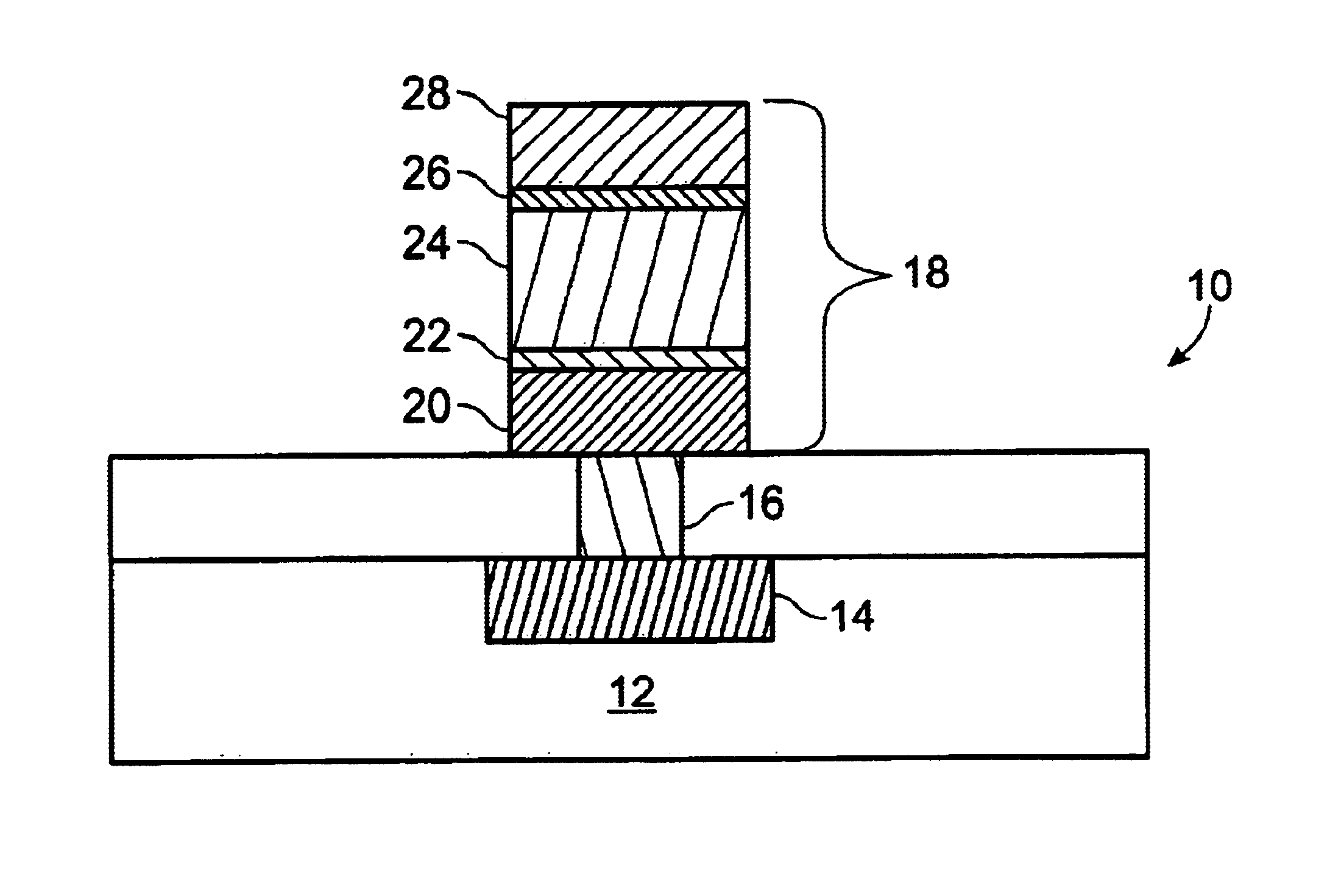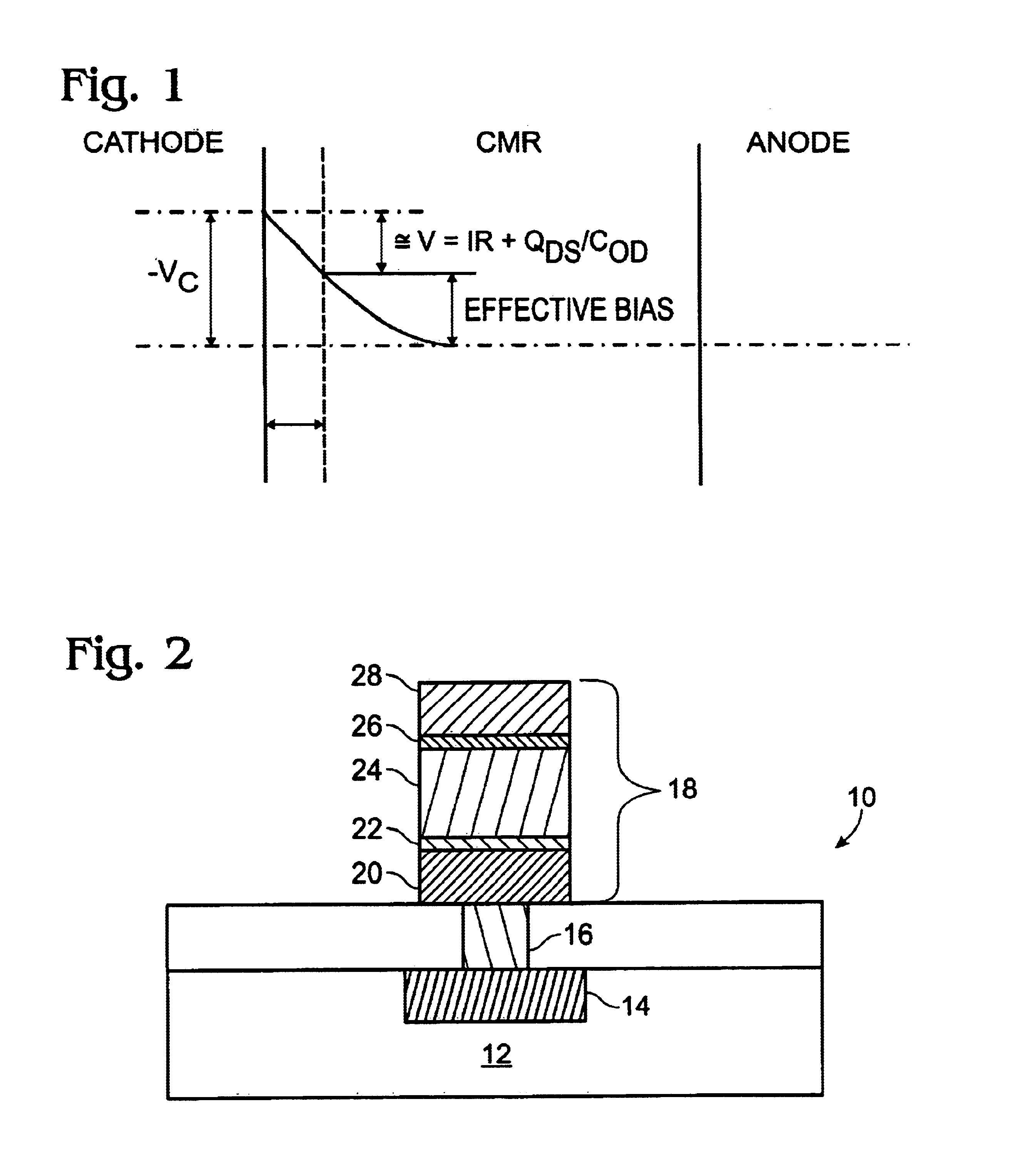RRAM memory cell electrodes
a memory cell and electrode technology, applied in the field of thin film resistance memory devices for nonvolatile memory arrays, can solve the problems of inability to etch electrodes formed of these materials using conventional integrated circuit etching processes, inability to manufacture economically, and inability to commercially available rram devices. achieve the effect of improving device reliability and device enduran
- Summary
- Abstract
- Description
- Claims
- Application Information
AI Technical Summary
Benefits of technology
Problems solved by technology
Method used
Image
Examples
Embodiment Construction
Experimental data demonstrates that, during programming, the resistivity of RRAM material near the cathode is switched to a high resistivity state while that near the anode is switched to low resistivity state. The conversion of the resistivity occurs during the instance when a narrow voltage pulse is applied to the device, which causes a voltage drop near the cathode. There is a clear onset voltage required for the resistivity changes. It is also experimentally found that the material needs a certain oxygen contend, as when the oxygen content is too low, there is no resistivity change.
If the electrode of a RRAM memory cell is not oxidation resistive, the electrode will be oxidized during the fabrication process temperature treatment, or will be gradually oxidized by the current-voltage-generated heat during normal operation. At the same time that electrode oxidation occurs, oxygen diffuses from the RRAM material to the electrode, causing an oxygen deficit region. Both the oxidized ...
PUM
 Login to View More
Login to View More Abstract
Description
Claims
Application Information
 Login to View More
Login to View More - R&D
- Intellectual Property
- Life Sciences
- Materials
- Tech Scout
- Unparalleled Data Quality
- Higher Quality Content
- 60% Fewer Hallucinations
Browse by: Latest US Patents, China's latest patents, Technical Efficacy Thesaurus, Application Domain, Technology Topic, Popular Technical Reports.
© 2025 PatSnap. All rights reserved.Legal|Privacy policy|Modern Slavery Act Transparency Statement|Sitemap|About US| Contact US: help@patsnap.com



